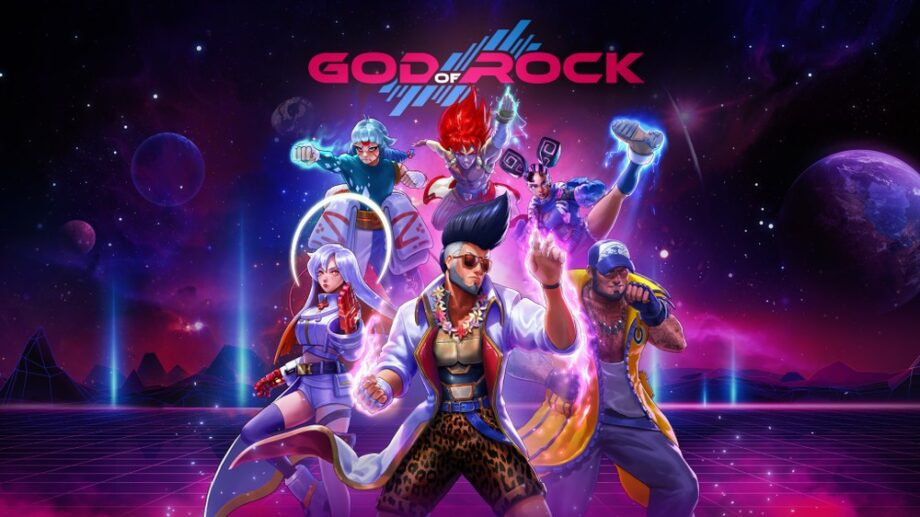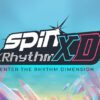God of Rock is a unique game that blends the rhythm-based, button-pressing, music genre (Frequency, Guitar Hero) with the button-mashing combo-heavy 1v1 fighting genre (Tekken, Virtua Fighter). It’s a tall order combining the two, and Modus Games has for the most part delivered with a true spectacle of a release that is visually amazing but ultimately comes up lacking due to the incredibly steep learning curve required to even make it past the first few levels.
From the outset, God of Rock is absolutely dripping with quality presentation. The loading screens and main menu are bright and bold, and set the tone for a world which is equally as corny as it is cool, with twelve of the baddest-assed fighting characters this side of Soul Calibur. Each has their own backstory, which is delivered via a series of comic still-frame cinematics, detailing how they found themselves being recruited to compete in the titular God of Rock Tournament. Not only are the visuals outstanding, the voice acting is superb.
 As the player is dropped into one of the eight spectacularly ominous fighting environments, the amazing character modeling shines through in three glorious dimensions – the lighting and shadowing highlight the incredibly detailed costume designs which will leave the gamer’s jaw on the floor. Fighters each have their respective opening sequences, and then square off for battle, much like any other fighting game. But unlike other games, God of Rock takes this moment to make a drastic transformation.
As the player is dropped into one of the eight spectacularly ominous fighting environments, the amazing character modeling shines through in three glorious dimensions – the lighting and shadowing highlight the incredibly detailed costume designs which will leave the gamer’s jaw on the floor. Fighters each have their respective opening sequences, and then square off for battle, much like any other fighting game. But unlike other games, God of Rock takes this moment to make a drastic transformation.
As the battle is to begin, the bottom half of the screen is overlayed with a four note musical staff which each consisting of four horizontal lines, each ending with one of the four face button shapes upon which images of the buttons slide along from the outer edge of the screen. As each image reaches the end of its respective line, the gamer presses the corresponding button. Each fighter sees the same patterns in the same rhythm, and whichever fighter is more accurate in their timing is rewarded with a strike in the upper half-screen’s fighting animations – not that the player will actually be able to pull their eyes off the lower half-screen where notes quickly increase in speed and complexity.

The game includes a series of complex fighting combos that can be unleashed once the gamer reaches certain thresholds in their music-based play. These moves typically involve the use of the analog sticks, which force the gamer to momentarily eschew their face button rhythm presses – negatively affecting that portion of the gameplay.
If this all sounds chaotic and confusing – well, you would be 100% correct. There is so much going on in God of Rock, it is nearly impossible to keep track of everything (or anything) required to not get your character’s ass completely kicked by the AI opponent, even on the easiest of difficulty settings. The gamer has to simultaneously monitor and manage three regions of the screen at a pacing that would make a cocaine addict step back and say “whoa!”

The confusing gameplay isn’t made any easier given that the four face buttons arranged in a cross pattern on the controller are defined in a vertical series on the screen, making it very difficult to distinguish between the square and circle buttons when a series of multi-note chords come sliding with only about a half-second delay between them.
It’s all still kind of cool to watch it all unfold on screen, even though the gameplay is absolutely brutal, and any semblance of success is nearly impossible – at least in my case. I’m sure there are some hardcore rhythm gamers who will find enjoyment in God of Rock, but I am old and slow and had a really difficult time working my way through this one.










